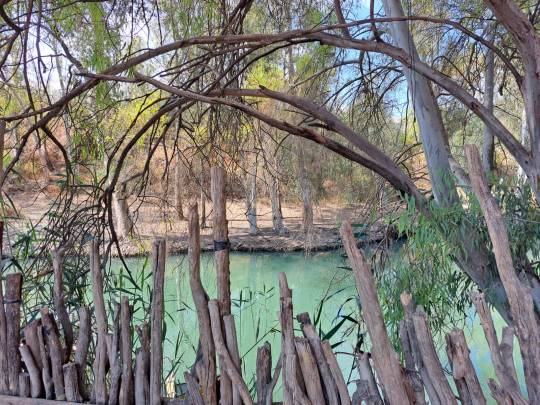#طبريا
Text
بحيرة طبريا - فلسطين 🇵🇸
كما تظهر من الاردن الحبيب 🇯🇴
منظر عام لبحيرة طبريا تم تصويرة من جبال الاردن بمنطقة ام قيس في الشمال
Lake Tiberias - Palestine 🇵🇸
As it appears from beloved Jordan 🇯🇴
A general view of Lake Tiberias, taken from the Jordan Mountains, in the Umm Qais area in the north.

#اسعد الله صباحكم#صباحيات#الكلمة الطيبة صدقة#صباح فلسطين#طبريا#بُحيرة طبَريا#فلسطين حره 🇵🇸✌️#فلسطين تقاوم#غزة العزة#فلسطين تنتصر#فلسطين#غزة تحت القصف#غزة#القدس عاصمة فلسطين#طوفان الاقصي#ceasefire now🇵🇸#palestineforever🇵🇸🍉#freepalaestine#savegaza🇵🇸#gazaunderattack🇵🇸#rafah#💙
4 notes
·
View notes
Text
طبريا، فلســـ.ـــ𓂆 1867ـــطين .
رسم
من كتاب
Cradle lands.

2 notes
·
View notes
Text
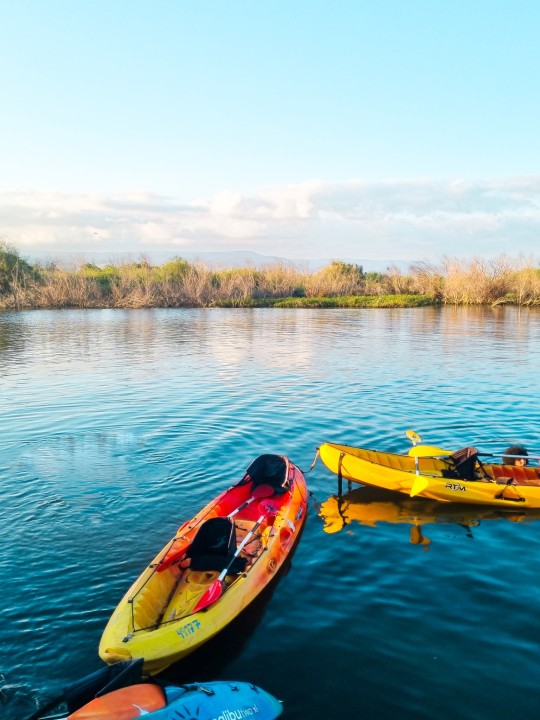



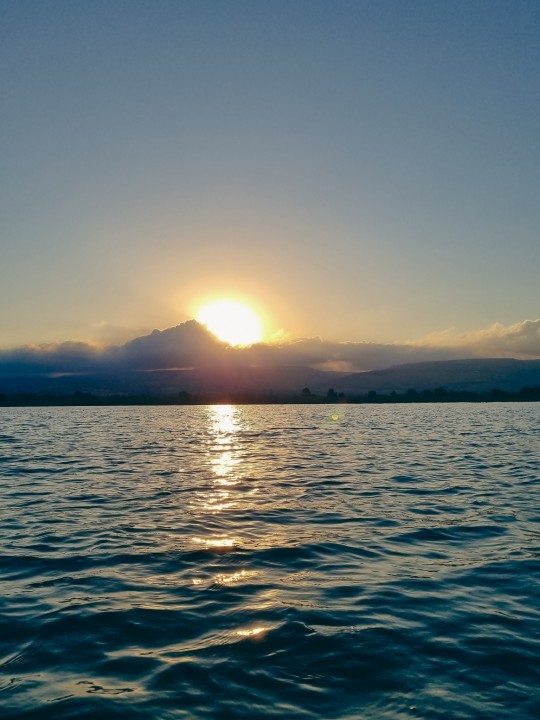


July 26 , 2022 🤍 soul nurturing experience
#lake#beauty#nature#kayaking#sport#soul#nurturing#water#landscape#spiritual#sunrise#boat#palestine#طبريا#بحيره
1 note
·
View note
Text
قصة بحيرة طبريا في شمال فلسطين
قصة بحيرة طبريا في شمال فلسطين
بحيرة طبريا هي بحيرة عذبة المياه تقع بين منطقة الجليل في شمال فلسطين وهضبة الجولان التين تحتلهما إسرائيل، على الجزء الشمالي من مسار نهر الأردن. يبلغ طول سواحلها 53 كم وطولها 21 كم وعرضها 13 كم، وتبلغ مساحتها 166 كم2. أقصى عمق فيها يصل إلى 46 متر. تنحدر من قمة جبل الشيخ الثلجية البيضاء، المياه الغزيرة لتشكل مجموعة من الينابيع التي تتجمع بدورها لتكون نهر الأردن. البحيرة والمنخفض حولها هما جزء من…

View On WordPress
0 notes
Text
معلومات عن مخاطر السباحة في بحيرة طبريا
معلومات عن مخاطر السباحة في بحيرة طبريا
بحيرة طبريا
تقع بحيرة طبريا في النصف الشمالي من دولة فلسطين وإلى الجهة الغربية من هضبة الجولان السورية، تنحفض عن سطح البحر حوالي 213م، وهي بذلك ثاني أخفض مسطح مائي بعد البحر الميت عالمياً، يبلغ طول ساحلها 53كم، وطولها 41كم، وعرضها 17كم، وعمقها 46م، ومساحتها 166كم2، احتلتها إسرئيل عام 1967م إثر أحداث النكسة، وقد قامت بتحويل مياهها إلى صحراء النقب في الجنوب.
مخاطر السباحة في بحيرة طبريا
تعتبر…
View On WordPress
0 notes
Text

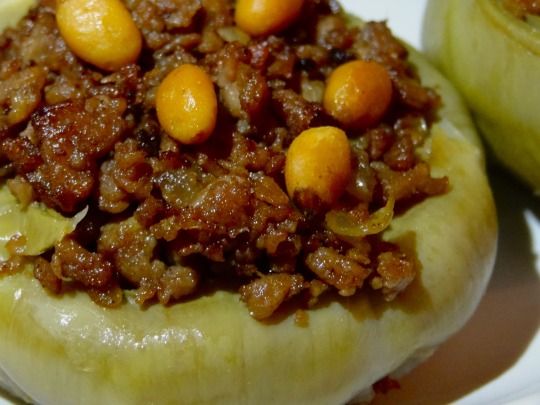
[ID: The first image is of four stuffed artichoke hearts on a plate with a mound of rice and fried vermicelli; the second is a close-up on one artichoke, showing fried ground 'beef' and golden pine nuts. End ID]
أرضي شوكي باللحم / Ardiyy-shawkiyy b-al-lahm (Stuffed artichoke hearts)
Artichoke hearts stuffed with spiced meat make a common dish throughout West Asia and North Africa, with variations on the recipe eaten in Lebanon, Syria, Palestine, Algeria, and Morocco. In Palestine, the dish is usually served on special occasions, either as an appetizer, or as a main course alongside rice. The artichokes are sometimes paired with cored potatoes, which are stuffed and cooked in the same manner. Stuffed artichokes do not appear in Medieval Arab cookbooks (though artichokes do), but the dish's distribution indicates that its origin may be Ottoman-era, as many other maḥshis (stuffed dishes) are.
The creation of this dish is easy enough once the artichoke hearts have been excavated (or, as the case may be, purchased frozen and thawed): they are briefly deep-fried, stuffed with ground meat and perhaps pine nuts, then stewed in water, or water and tomato purée, or stock, until incredibly tender.
While simple, the dish is flavorful and well-rounded. A squeeze of lemon complements the bright, subtle earthiness of the artichoke and cuts through the richness of the meat; the fried pine nuts provide a play of textures, and pick up on the slight nutty taste that artichokes are known for.
Terminology and etymology
Artichokes prepared in this way may be called "ardiyy-shawkiyy b-al-lahm." "Ardiyy-shawkiyy" of course means "artichoke"; "ب" ("b") means "with"; "ال" ("al") is the determiner "the"; and "لَحْم" ("laḥm") is "meat" (via a process of semantic narrowing from Proto-Semitic *laḥm, "food"). Other Palestinian Arabic names for the same dish include "أرضي شوكي محشي" ("ardiyy-shawkiyy maḥshi," "stuffed artichokes"), and "أرضي شوكي على ادامه" ("ardiyy-shawkiyy 'ala adama," "artichokes cooked in their own juice").
The etymology of the Levantine dialectical phrase meaning "artichoke" is interestingly circular. The English "artichoke" is itself ultimately from Arabic "الخُرْشُوف" ("al-khurshūf"); it was borrowed into Spanish (as "alcarchofa") during the Islamic conquest of the Iberian peninsula, and thence into English via the northern Italian "articiocco." The English form was probably influenced by the word "choke" via a process of phono-semantic matching—a type of borrowing wherein native words are found that sound similar to the foreign word ("phonetics"), and communicate qualities associated with the object ("semantics").
"Artichoke" then returned to Levantine Arabic, undergoing another process of phono-semantic matching to become "ardiyy-shawkiyy": أَرْضِيّ ("ʔarḍiyy") "earthly," from أَرْض ("ʔarḍ"), "Earth, land"; and شَوْكِيّ ("shawkiyy") "prickly," from شَوْك ("shawk"), "thorn."
Artichokes in Palestine
Artichoke is considered to be very healthful by Palestinian cooks, and it is recommended to also consume the water it is boiled in (which becomes delightfully savory and earthy, suitable as a broth for soup). In addition to being stuffed, the hearts may be chopped and cooked with meat or potatoes into a rich soup. These soups are enjoyed especially during Ramadan, when hot soup is popular regardless of the season—but the best season for artichokes in the Levant is definitively spring. Stuffed artichokes are thus often served by Jewish people in North Africa and West Asia during Passover.
Artichokes grow wild in Palestine, sometimes in fields adjacent to cultivated crops such as cereals and olives. Swiss traveler Johann Ludwig Burckhardt, writing in 1822, referred to the abundant wild artichoke plants (presumably Cynara syriaca) near لُوبْيا ("lūbyā"), a large village of stone buildings on a hilly landscape just west of طبريا ("ṭabariyya," Tiberias):
About half an hour to the N. E. [of Kefer Sebt (كفر سبط)] is the spring Ain Dhamy (عين ظامي), in a deep valley, from hence a wide plain extends to the foot of Djebel Tor; in crossing it, we saw on our right, about three quarters of an hour from the road, the village Louby (لوبي), and a little further on, the village Shedjare (شجره). The plain was covered with the wild artichoke, called khob (خُب); it bears a thorny violet coloured flower, in the shape of an artichoke, upon a stem five feet in height.
(Despite resistance from local militia and the Arab Liberation Army, Zionist military groups ethnically cleansed Lubya of its nearly 3,000 Palestinian Arab inhabitants in July of 1948, before reducing its buildings and wells to rubble, The Jewish National Fund later planted the Lavi pine forest over the ruins.)
Artichokes are also cultivated and marketed. Elihu Grant, nearly a century after Burckhardt's writing, noted that Palestinian villages with sufficient irrigation "[went] into gardening extensively," and marketed their goods in crop-poor villages or in city markets:
Squash, pumpkin, cabbage, cauliflower, lettuce, turnip, beet, parsnip, bean, pea, chick-pea, onion, garlic, leek, radish, mallow and eggplant are common varieties [of vegetable]. The buds of the artichoke when boiled make a delicious dish. Potatoes are getting to be quite common now. Most of them are still imported, but probably more and more success will be met in raising a native crop.
Either wild artichokes (C. syriaca) or cardoons (C. cardunculus, later domesticated to yield modern commerical artichokes) were being harvested and eaten by Jewish Palestinians in the 1st to the 3rd centuries AD (the Meshnaic Hebrew is "עַכָּבִיּוֹת", sg. "עַכָּבִית", "'aqubit"; related to the Arabic "عَكُوب" "'akūb," which refers to a different plant). The Tosefta Shebiit discusses how farmers should treat the sprouting of artichokes ("קינרסי," "qinrasi") during the shmita year (when fields are allowed to lie fallow), indicating that Jews were also cultivating artichokes at this time.
Though artichokes were persistently associated with wealth and the feast table (perhaps, Susan Weingarten speculates, because of the time they took to prepare), trimming cardoons and artichokes during festivals, when other work was prohibited, was within the reach of common Jewish people. Those in the "upper echelons of Palestinian Jewish society," on the other hand, had access to artichokes year-round, including (through expensive marvels of preservation and transport) when they were out of season.
Jewish life and cuisine
Claudia Roden writes that stuffed artichoke, which she refers to as "Kharshouf Mahshi" (خرشوف محشي), is "famous as one of the grand old Jerusalem dishes" among Palestinian Jews. According to her, the stuffed artichokes used to be dipped in egg and then bread crumbs and deep-fried. This breading and frying is still referenced, though eschewed, in modern Sephardi recipes.
Prior to the beginning of the first Aliyah (עלייה, wave of immigration) in 1881, an estimated 3% of the overall population of Palestine, or 15,011 people, were Jewish. This Jewish presence was not the result of political Zionist settler-colonialism of the kind facilitated by Britain and Zionist organizations; rather, it consisted of ancestrally Palestinian Jewish groups, and of refugees and religious immigrants who had been naturalized over the preceding decades or centuries.
One such Jewish community were the Arabic-speaking Jews whom the Sephardim later came to call "מוּסְתערבים" or "مستعربين" ("Musta'ravim" or "Musta'ribīn"; from the Arabic "مُسْتَعْرِب" "musta'rib," "Arabized"), because they seemed indifferentiable from their Muslim neighbors. A small number of them were descendants of Jews from Galilee, which had had a significant Jewish population in the mid-1st century BC; others were "מגרבים" ("Maghrebim"), or "مغربية" ("Mughariba"): descendents of Jews from Northwest Africa.
Another major Jewish community in pre-mandate Palestine were Ladino-speaking descendents of Sephardi Jews, who had migrated to Palestine in the decades following their expulsion from Spain and then Portugal in the late 15th century. Though initially seen as foreign by the 'indigenous' Mista'avim, this community became dominant in terms of population and political influence, coming to define themselves as Ottoman subjects and as the representatives of Jews in Palestine.
A third, Yiddish- and German-speaking, Askenazi Jewish population also existed in Palestine, the result of immigration over the preceding centuries (including a large wave in 1700).
These various groups of Jewish Palestinians lived as neighbors in urban centers, differentiating themselves from each other partly by the language they spoke and partly by their dress (though Sephardim and Ashkenazim quickly learned Arabic, and many Askenazim and Muslims learned Ladino). Ashkenazi women also learned from Sephardim how to prepare their dishes. These groups' interfamiliarity with each other's cuisine is further evidenced by the fact that Arabic words for Palestinian dishes entered Ladino and Yiddish (e.g. "كُفْتَة" / "kufta," rissole; "مَزَّة" "mazza," appetizer); and words entered Arabic from Ladino (e.g. "דונסי" "donsi," sweet jams and fruit leather; "בוריק" "burek," meat and cheese pastries; "המים" "hamim," from "haminados," braised eggs) and Yiddish (e.g. "לעקעך" "lakach," honey cake).
In addition to these 'native' Jews were another two waves of Ashkenazi migration in the late 18th and early-to-mid 19th centuries (sometimes called the "היישוב הישן," "ha-yishuv ha-yashan," "old settlement," though the term is often used more broadly); and throughout the previous centuries there had also been a steady trickle of religious immigration, including elderly immigrants who wished to die in Jerusalem in order to be present at the appointed place on the day of Resurrection. Recent elderly women immigrants unable to receive help from charitable institutions would rely on the community for support, in exchange helping the young married women of the neighborhood with childcare and with the shaping of pastries ("מיני מאפה").
In the first few centuries AD, the Jewish population of Palestine were largely farmers and agricultural workers in rural areas. By the 16th century, however, most of the Jewish population resided in the Jewish Holy Cities of Jerusalem (القُدس / al-quds), Hebron (الخليل / al-khalil), Safed (صفد), and Tiberias (طبريا / ṭabariyya). In the 19th century, the Jewish population lived entirely in these four cities and in expanding urban centers Jaffa and Haifa, alongside Muslims and Christians. Jerusalem in particular was majority Jewish by 1880.
In the 19th century, Jewish women in Jerusalem, like their Christian and Muslim neighbors, used communal ovens to bake the bread, cakes, matzah, cholent, and challah which they prepared at home. One woman recalls that bread would be sent to the baker on Mondays and Thursdays—but bribes could be offered in exchange for fresh bread on Shabbat. Charges would be by the item, or else a fixed monthly payment.
Trips to the ovens became social events, as women of various ages—while watching the bakers, who might not put a dish in or take it out in time—sent up a "clatter" of talking. During religious feast days, with women busy in the kitchen, some families might send young boys in their stead.
Markets and bakeries in Jerusalem sold bread of different 'grades' based on the proportion of white and wheat flour they contained; as well as flatbread (خبز مفرود / חובז מפרוד / khobbiz mafroud), Moroccan מאווי' / ماوي / meloui, and semolina breads (כומאש / كماج / kmaj) which Maghrebim especially purchased for the Sabbath.
On the Sabbath, those who had brick ovens in their sculleries would keep food, and water for tea and coffee, warm from the day before (since religious law prohibits performing work, including lighting fires, on Shabbat); those who did not would bring their food to the oven of a neighbor who did.
Palestinian Jewish men worked in a variety of professions: they were goldsmiths, writers, doctors, merchants, scientists, linguists, carpenters, and religious scholars. Jewish women, ignoring prohibitions, engaged in business, bringing baked goods and extra dairy to markets in Jerusalem, grinding and selling flour, spinning yarn, and making clothing (usually from materials purchased from Muslims); they were also shopkeepers and sellers of souvenirs and wine. Muslims, Jews, and Christians shared residential courtyards, pastimes, commercial enterprises, and even holidays and other religious practices.
Zionism and Jewish Palestinians
Eastern European Zionists in the 1880s and 90s were ambivalent towards existing Jewish communities in Palestine, often viewing them as overly traditional and religious, backwards-thinking, and lacking initiative. Jewish Palestinians did not seem to conform with the land-based, agricultural, and productivist ideals of political Zionist thinkers; they were integrated into the Palestinian economy (rather than seeking to create their own, segregated one); they were not working to create a Jewish ethnostate in Palestine, and seemed largely uninterested in nationalist concerns. Thus they were identified with Diaspora Jewish culture, which was seen as a remnant of exile and oppression to be eschewed, reformed, or overthrown.
These attitudes were applied especially to Sephardim and Mista'arevim, who were frequently denigrated in early Zionist literature. In 1926, Revisionist Zionist leader Vladimir Jabotinsky wrote that the "Jews, thank God, have nothing in common with the East. We must put an end to any trace of the Oriental spirit in the Jews of Palestine." The governance of Jewish communities was, indeed, changed with the advent of the British Mandate (colonial rule which allowed the British to facilitate political Zionist settling), as European political and "socialist" Zionists promoted Ashkenazi over Sephardi leadership.
Under the Ottomans, the millet system had allowed a degree of Jewish and Christian autonomy in matters of religious study and leadership, cultural and legal affairs, and the minting of currency. The religious authority of all Jewish people in Palestine had been the Sephardi Rabbi of Jerusalem, and his authority on matters of Jewish law (like the authority of the Armenian Patriarchate on matters of Christian law) extended outside of Palestine.
But British and European funding allowed newer waves of Ashkenazi settlers (sometimes called "היישוב החדש," "ha-yishuv ha-khadash," "new settlement")—who, at least if they were to live out the ideals of their sponsors, were more secular and nationalist-minded than the prior waves of Ashkenazi immigration—to be de facto independent of Sephardi governance. Several factors lead to the drying up of halaka (donated funds intended to be used for communal works and the support of the poor in Sephardi communities), which harmed Sephardim economically.
Zionist ideas continued to dominate newly formed committees and programs, and Palestinian and Sephardi Jews reported experiences of racial discrimination, including job discrimination, leading to widespread poverty. The "Hebrew labor" movement, which promoted a boycott of Palestinian labor and produce, in fact marginalized all workers racialized as Arab, and promises of work in Jewish labor unions were divided in favor of Ashkenazim to the detriment of Sephardim and Mizrahim. This economic marginalization coincided with the "social elimination of shared indigenous [Palestinian] life" in the Zionist approach to indigenous Jews and Muslims.
Despite the adversarial, disdainful, and sometimes abusive relationship which the European Zionist movement had with "Oriental" Jews, their presence is frequently used in Zionist food and travel writing to present Israel as a multicultural and pluralist state. Dishes such as stuffed artichokes are claimed as "Israeli"—though they were eaten by Jews in Palestine prior to the existence of the modern state of Israel, and though Sephardi and Mizrahi diets were once the target of a civilizing, correcting mission by Zionist nutritionists. The deep-frying that stuffed artichokes call for brings to mind European Zionists' half-fascinated, half-disgusted attitudes towards falafel.
The point is not to claim a dish for any one national or ethnic group—which is, more often than not, an exercise in futility and even absurdity—but to pay attention to how the rhetoric of food writing can obscure political realities and promote the colonizer's version of history. The sinking of Jewish Palestinian life prior to the advent of modern political Zionism, and the corresponding insistence that it was Israel that brought "Jewish cuisine" to Palestine, allow for such false dichotomies as "Jewish-Palestinian relations" or "Jewish-Arab relations"; these descriptors further Zionist rhetoric by making a clear situation of ethnic cleansing and settler-colonialism sound like a complex and delicate issue of inter-ethnic conflict. To boot, the presentation of these communities as having merely paved the way to Zionist nationalism ignores their existence as groups with their own political, social, and cultural lives and histories.
Help evacuate a Gazan family with Operation Olive Branch
Buy an eSim for use in Gaza
Help Anera provide food in Gaza
Ingredients:
Serves 4 (as a main dish).
For the artichokes:
6 fresh, very large artichokes; or frozen (not canned) whole artichoke hearts
1 lemon, quartered (if using fresh artichokes)
250g (1 1/2 cups) vegetarian ground beef substitute; or 3/4 cup TVP hydrated with 3/4 cup vegetarian 'beef' stock from concentrate
1 yellow onion, minced
Scant 1/2 tsp kosher salt
1/2 tsp ground black pepper
1 pinch ground cardamom (optional)
1/4 tsp ground allspice or seb'a baharat (optional)
1 Tbsp pine nuts (optional)
Water, to simmer
Oil, to fry
2 tsp vegetarian 'beef' stock concentrate, to simmer (optional)
Lemon, to serve
Larger artichokes are best, to yield hearts 3-4 inches in width once all leaves are removed. If you only have access to smaller artichokes, you may need to use 10-12 to use up all the filling; you might also consider leaving some of the edible internal leaves on.
The meat may be spiced to taste. Sometimes only salt and black pepper are used; some Palestinian cooks prefer to include seb'a baharat, white pepper, allspice, nutmeg, cardamom, and/or cinnamon.
Medieval Arab cookbooks sometimes call for vegetables to be deep-fried in olive oil (see Fiḍālat al-Khiwān fī Ṭayyibāt al-Ṭaʿām wa-l-Alwān, chapter 6, recipe no. 373, which instructs the reader to treat artichoke hearts this way). You may use olive oil, or a neutral oil such as canola or sunflower (as is more commonly done in Palestine today).
Elihu Grant noted in 1921 that lemon juice was often served with stuffed vegetable dishes; today stuffed artichokes are sometimes served with lemon.
For the rice:
200g Egyptian rice (or substitute any medium-grained white rice)
2 tsp broken semolina vermicelli (شعيريه) (optional)
1 tsp olive oil (optional)
Large pinch salt
520g water, or as needed
Broken semolina vermicelli (not rice vermicelli!) can be found in plastic bags at halal grocery stores.
Instructions:
For the stuffed artichokes:
1. Prepare the artichoke hearts. Cut off about 2/3 of the top of the artichoke (I find that leaving at least some of the stem on for now makes it easier to hollow out the base of the artichoke heart without puncturing it).
2. Pull or cut away the tough outer bracts ("leaves") of the artichoke until you get to the tender inner leaves, which will appear light yellow all the way through. As you work, rub a lemon quarter over the sides of the artichoke to prevent browning.
3. If you see a sharp indentation an inch or so above the base of the artichoke, use kitchen shears or a sharp knife to trim off the leaves above it and form the desired bowl shape. Set aside trimmings for a soup or stew.
4. Use a small spoon to remove the purple leaves and fibers from the center of the artichoke. Make sure to scrape the spoon all along the bottom and sides of the artichoke and get all of the fibrous material out.
5. Use a paring knife to remove any remaining tough bases of removed bracts and smooth out the base of the artichoke heart. Cut off the entire stem, so that the heart can sit flat, like a bowl.
6. Place the prepared artichoke heart in a large bowl of water with some lemon juice squeezed into it. Repeat with each artichoke.
7. Drain artichoke hearts and pat dry. Heat a few inches of oil in a pot or wok on medium and fry artichoke hearts, turning over occasionally, for a couple minutes until lightly browned. If you don't want to deep-fry, you can pan-fry in 1 cm or so of oil, flipping once. Remove with a slotted spoon and drain.
8. Prepare the filling. Heat 1 tsp of olive oil in a large skillet on medium-high and fry onions, agitating often, until translucent.
Tip: Some people add the pine nuts and brown them at this point, to save a step later. If you do this, they will of course be mixed throughout the filling rather than being a garnish on top.
9. Add spices, salt, and meat substitute and fry, stirring occasionally, until meat is browned. (If using TVP, brown it by allowing it to sit in a single layer undisturbed for 3-4 minutes, then stir and repeat.) Taste and adjust spices and salt.
10. Heat 1 Tbsp of olive oil or margarine in a small pan on medium-low. Add pine nuts and fry, stirring constantly, until they are a light golden brown, then remove with a slotted spoon. Note that, once they start taking on color, they will brown very quickly and must be carefully watched. They will continue to darken after they are removed from the oil, so remove them when they are a shade lighter than desired.
11. Stuff the artichoke hearts. Fill the bowl of each heart with meat filling, pressing into the bottom and sides to fill completely. Top with fried pine nuts.
12. Cook the artichoke hearts. Place the stuffed artichoke hearts in a single layer at the bottom of a large stock pot, along with any extra filling (or save extra filling to stuff peppers, eggplant, zucchini, or grape leaves).
13. Whisk stock concentrate into several cups of just-boiled water, if using—if not, whisk in about a half teaspoon of salt. Pour hot salted water or stock into the pot to cover just the bottoms of the stuffed artichokes.
14. Simmer, covered, for 15-20 minutes, until the artichokes are tender. Simmer uncovered for another 5-10 minutes to thicken the sauce.
For the rice:
1. Rinse your rice once by placing it in a sieve, putting the sieve in a closely fitting bowl, then filling the bowl with water; rub the rice between your fingers to wash, and remove the sieve from the bowl to strain.
2. Place a bowl on a kitchen scale and tare. Add the rice, then add water until the total weight is 520g. (This will account for the amount of water stuck to the rice from rinsing.)
3. (Optional.) In a small pot with a close-fitting lid, heat 1 tsp olive oil. Add broken vermicelli and fry, agitating often, until golden brown.
4. Add the rice and water to the pot and stir. Increase heat to high and allow water to come to a boil. Cover the pot and lower heat to a simmer. Cook the rice for 15 minutes. Remove from heat and steam for 10 minutes.
To serve:
1. Plate artichoke hearts on a serving plate alongside rice and lemon wedges; or, place artichoke hearts in a shallow serving dish, pour some of their cooking water in the base of the dish, and serve rice on a separate plate.
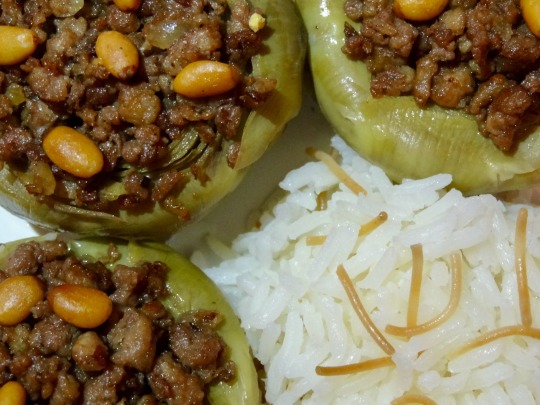
Tip: The white flesh at the base of the bracts (or "leaves") that you removed from the artichokes for this recipe is also edible. Try simmering removed leaves in water, salt, and a squeeze of lemon for 15 minutes, then scraping the bract between your teeth to eat the flesh.
179 notes
·
View notes
Text

القدس
تأوي المدينة القديمة عدداً من المعالم الدينية ذات الأهمية الكبرى مثل، المسجد الأقصى أولى القبلتين وثالث الحرمين الشريفين، الذي عرج منه النبي محمد صلى الله عليه وسلم إلى السماء ليكلم الله عز وجل في رحلة الإسراء والمعراج، والمسجد الأقصى مكون من عدة معالم مقدسة أهمها مسجد قبة الصخرة والمسجد القبلي وحائط البراق، ويُذكر في بعض المصادر الإسلامية على أنه الحائط الذي قام الرسول محمد بن عبد الله بربط البراق إليه في ليلة الإسراء والمعراج، ويعتبره اليهود الأثر الأخير الباقي من هيكل سليمان، وكذلك كنيسة القيامة التي تعتبر أهم الكنائس لدى المسيحيين في مختلف بقاع العالم.
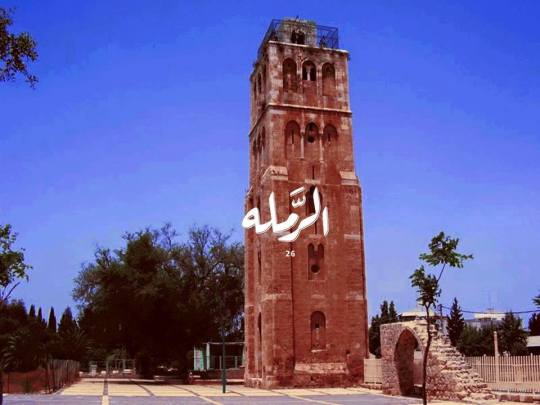
الرملة
تأسست سنة 716 م على يد الخليفة الأموي سليمان بن عبد الملك، وسميت نسبة إلى الرمال التي كانت تحيطها.
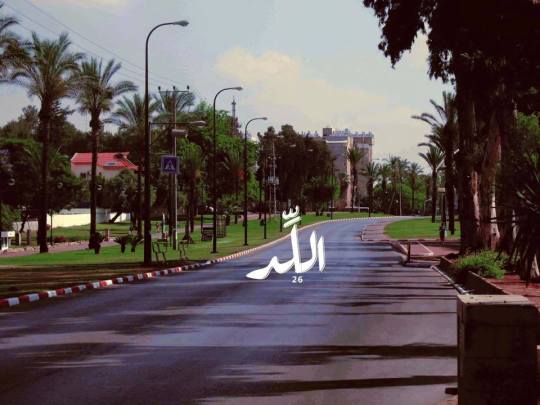
اللد
أسسها الكنعانيون في الألف الخامس قبل الميلاد، وذكر�� في الكتاب المقدّس عدّة مرّات، وعرفت بإسم "لود".

الناصرة
تقع بين طبريا وحيفا، وهي مدينة مقدسة عند المسيحيين وفيها كنيسة البشارة، وعاش فيها السيد المسيح عليه السلام، وتكثر حولها أشجار العنب والزيتون.

النقب
منطقة صحراوية تعد جزء من شبه جزيرة سيناء، ومن أهم مدن النقب بئر السبع، رهط، عرعرة، تل السبع، تل عراد، كسيفة، حورة، اللقيه، شقيب السلام، أم حيران، أم متان، القصر، اخشم، الأعسم، بير هداج، وادي النعم، ترابين الصانع.

بيت لحم
للمدينة أهمية عظيمة لدى المسيحيين لكونها مسقط رأس المسيح عليه السلام. تضم بيت لحم العديد من الكنائس، ولعل أهمها كنيسة المهد، التي بنيت على يد قسطنطين الأكبر. وقد بنيت الكنيسة فوق كهف أو مغارة يعتقد أنها الإسطبل الذي ولد فيه المسيح.
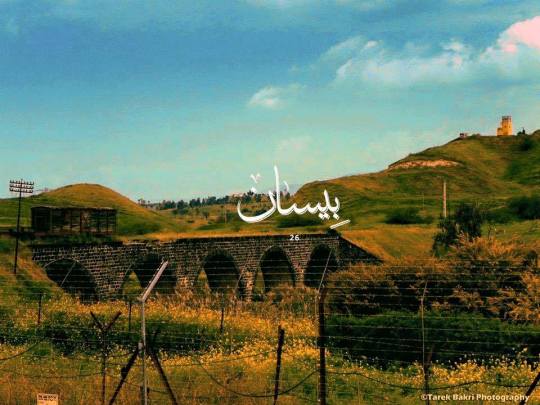
بيسان
أصل الإسم القديم "بيسان" غير مؤكد، ورد في الكتاب المقدس بالصيغة القديمة "بيت شان"، وتفسيره بيت (أي معبد) وربما "شان" إسم الإله.

جنين
ورد إسم المدينة في التوراة بإسم "عين جنيم" أي عين الجنات لكثرة مياهها وبساتينها، وتقوم مدينة جنين على الأرض التي كانت تقوم عليها مدينة "عين جنيم". لذلك سُميت بهذا الاسم بسبب الجنائن التي تحيط بها.

حيفا
يعود زمن إستيطان البشر بالمنطقة إلى عشرات الآلاف من السنين حيث عثر منقبون على بقايا هياكل بشرية تعود إلى العصر الحجري وآثار حضارات العصر الحجري القديم بمراحله الثلاث (نصف مليون سنة إلى 15 ألف سنة قبل الميلاد). ولقد تأسست حيفا في بادئ الأمر كقرية صغيرة في القرن الرابع عشر ق.م على يد الكنعانيين. فُتِحت المدينة في عهد الخليفة عمر بن الخطاب عام 633 م، وبقيت حيفا جزءاً من الدولة الإسلامية طيلة العهد الأموي والعباسي. إلا أن حيفا الحديثة، قد تأسست عام 1761 في مكان البلدة القديمة على يد القائد ظاهر العمر. والذي أسس إمارة شبه مستقلة عن العثمانيين في الجليل.

رام الله
تلاصق رام الله ومدينة البيرة حتى تتداخل مبانيهما وشوارعهما لتبدوان كمدينة واحدة، وتشير الدراسات التاريخية والأثرية إلى أن قصة النبي يوسف قد حدثت في منطقة رام الله والبيرة، ولقد إختلف المؤرخون في تحديد البئر الذي ألقي فيه النبي يوسف.

سلفيت
مدينة كنعانية الأصل سماها القدماء سل فيت أصل الكلمة لاتينية ويقال أنها تعني سلة العنب، دلالة على شهرتها بزراعة العنب.

صفد
مدينة جبلية تقع في شرق جبال الجليل، كما تُعتبر واحدة من أكثر مدن البلاد إرتفاعاً عن سطح البحر بحوالي 900 متر فوق سطح البحر. وتطل على بحيرة طبريا ومرج بيسان الواقعين إلى الجنوب الشرقي منها وعلى جبل الجرمق إلى الغرب.
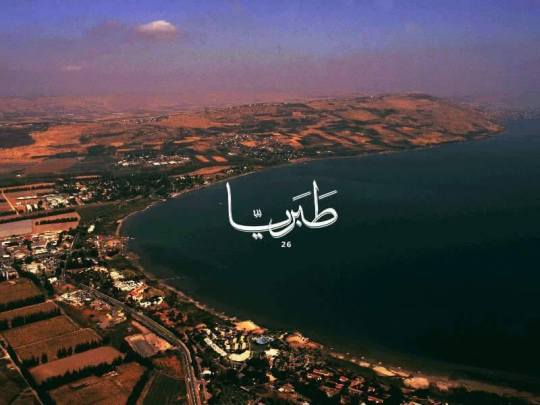
طبريا
تأسست مدينة طبريا في سنة 20 م قرب بقايا مدينة الرقة الكنعانية على يد الإمبراطور الروماني هيرودس الذي كان من أنجال هيرودس الكبير. وسمى هيرودس أنتيباس المدينة على اسم الإمبراطور الروماني طيباريوس.

طولكرم
ذكرتها مصادر الفرنجة بإسم طوركرمى. والطور بمعنى الجبل الذي تنبت الكرمة (العنب) عليه، ويكون المعنى جبل الكرم. وذكرها المقريزي باسم طوركرم، وبقيت معروفة باسم طوركرم حتى القرن الثاني عشر الهجري، حيث حرف الطور إلى طول ودعيت باسم طولكرم.
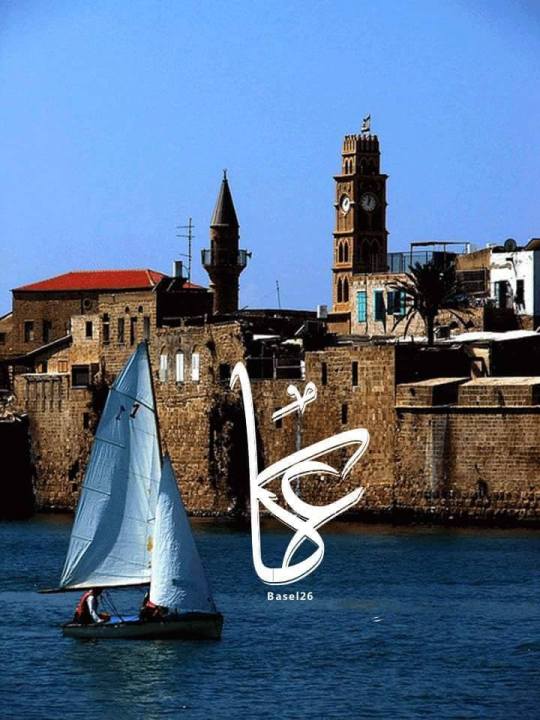
عكا
تأسست المدينة في الألف الثالثة ق.م على يد الكنعانيين، الذين جعلوا منها مركزاً تجارياً ودعوها بإسم (عكو) أي الرمل الحار. أصبحت بعد ذلك جزءاً من دولة الفينيقيين، ثم إحتلها العديد من الغزاة كالإغريق والرومان والفرس والفرنجة الصليبيون. دخل العرب المسلمون عكا سنة 636 م / 16 هـ بقيادة شرحبيل بن حسنة. وفي سنة 20 هـ أنشأ فيها معاوية بن أبي سفيان داراً لصناعة السفن، ومنها إنطلقت أول غزوة لجزيرة قبرص عام 28 هـ. وتوالت عليها الأحداث على مر التاريخ، ومن أشهر حكامها أحمد باشا الجزار. بلغت أوج مجدها عام 1799 م عندما أوقفت زحف نابليون الذي وصل إليها بعد أن إحتل مصر، وساحل فلسطين، وحاصرها مدة طويلة ولكنه فشل في احتلاها بفضل صمود أحمد باشا الجزار، فتلاشت أحلام نابليون بالاستيلاء على الشرق، وسحب جيوشه.
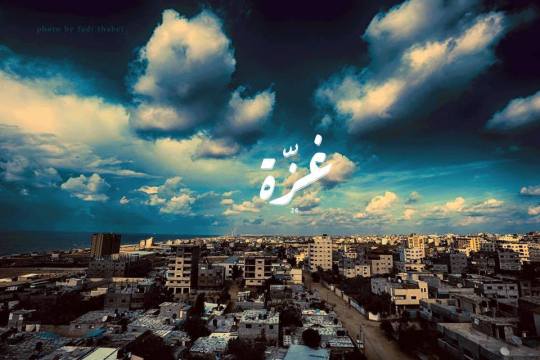
غزة
أسس المدينة الكنعانيون في القرن الخامس عشر قبل الميلاد. دخل المسلمون العرب المدينة وأصبحت مركزاً إسلامياً مهماً وخاصة أنها مشهورة بوجود قبر الجد الثاني للنبي محمد، هاشم بن عبد مناف فيها، لذلك تسمى أحياناً غزة هاشم. وتُعتبر المدينة مسقط رأس الإمام الشافعي الذي ولد عام 767 م وهو أحد الأئمة الأربعة عند المسلمين السنة.
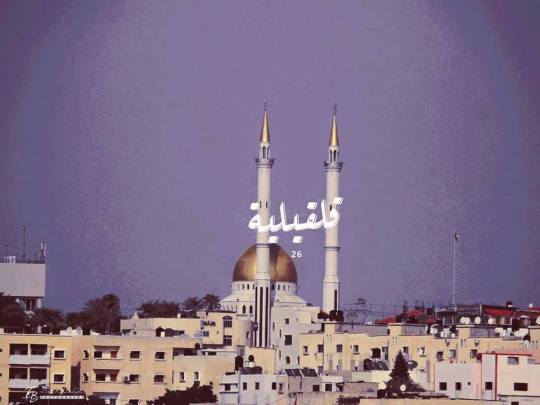
قلقيلية
يعود تاريخ المدينة وجذور التسمية إلى العصر الكنعاني. فيرى بعض المؤرخين أنها أحد الجلجالات التي ورد ذكرها في العهد القديم. و(الجلجال) لفظ كنعاني أطلق على الحجارة المستديرة ومن ثم على المناطق والتخوم المستديرة. ويذكر المؤرخ (يوسيفيوس) أن إسم قلقيلية مأخوذ من إسم قلعة تعرف بإسم (قلقاليا) وهي القرية التي ذكرت في العهد القديم بإسم (جلجاليا).
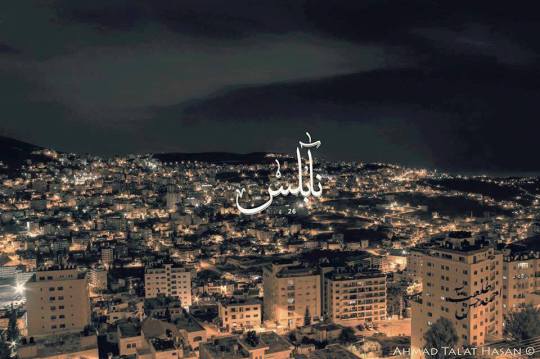
نابلس
خضعت لحكم العديد من الأباطرة الرومان على مدى 2,000 سنة. وفي القرنين الخامس والسادس للميلاد أدّى نزاع بين سكان المدينة من السامريين والمسيحيين إلى بروز عدد من الإنتفاضات السامرية ضد الحكم البيزنطي، قبل أن تقوم الإمبراطورية بإخماد ثوراتهم هذه بعنف، مما أدى لاضمحلال عددهم في المدينة. فتح العرب المسلمون، في زمن خلافة أبي بكر الصديق، هذه المدينة وباقي فلسطين وبلاد الشام، وفي هذا العهد عُرّب إسمها ليصبح نابلس بدلاً من نيابوليس، إزداد عدد المسلمين من سكانها وأخذت البعض من كنائسها ومعابدها السامرية تتحول إلى مساجد شيئاً فشيئاً. سقطت نابلس تحت الحكم الصليبي عام 1099 قبل أن تعود لحكم المسلمين الأيوبيين والمماليك بعدهم. ويحدها جبلان هما جبل جرزيم وجبل عيبال.
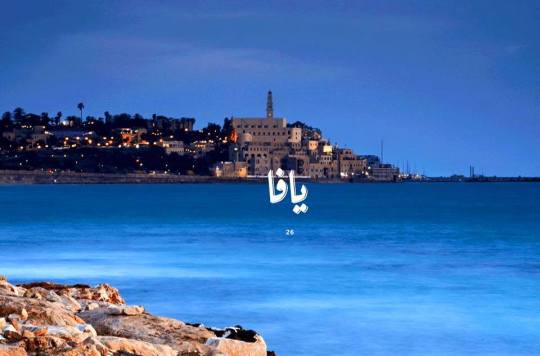
يافا
يطلق عليها عروس فلسطين، ومن أهم الأحداث التي شهدتها المدينة نزول النبي يونس شواطئها في القرن الثامن قبل الميلاد ليركب منها سفينة قاصداً تر��يش. ولما دخل الفتح الإسلامي إلى فلسطين فتح عمرو بن العاص يافا في نفس عام دخول عمر بن الخطاب القدس.
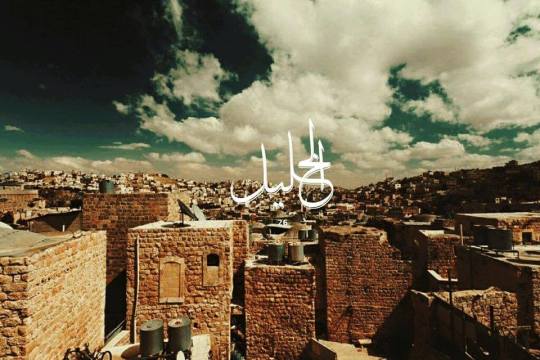
الخليل
سُميَّت مدينة الخليل بهذا الإسم نسبةَ إلى نبي الله إبراهيم الخليل، حيث يعتقد أنه سكن مدينة الخليل في منطقة الحرم الإبراهيمي بعد هجرته من مدينة أور السومرية. كانت تسمى بقرية أربع نسبة إلى ملك كنعاني إسمه أربع، وسميت بعدها حبرون نسبة للملك عفرون الحثي الكنعاني الذي باع المغارة لإبراهيم دون مقابل وحسب الرواية التوراتية بأربعة شواقل وكان الشاقل العملة الكنعانية. سمّيت فيما بعد بالخليل. ويتوسط المدينة المسجد الإبراهيمي الذي يحوي مقامات للأنبياء إبراهيم، وإسحق، ويعقوب، وزوجاتهم.

البيرة
ورد ذكر البيرة في العهد القديم أكثر من مرة باسم بيئروت، وذلك في قصة كل من النبي هارون أخي النبي موسى عليهما السلام، وقصة احتلال بني إسرائيل لفلسطين زمن يوشع بن نون، عرفت البيرة في العهد الروماني باسم بيرية، ويقال أن السيدة مريم العذراء وخطيبها يوسف النجار فقدوا المسيح بها وهو طفل في الثانية عشرة من عمره في طريق عودتهم من القدس إلى الناصرة، بعد الفتح الإسلامي لعبت البيرة دوراً مميزاً على مسرح الأحداث في فلسطين ويعتقد أن عمر بن الخطاب قد حل بها في طريقة من المدينة المنورة إلى القدس لإستلام مفاتيح القدس من البيزنطيين، وقد أقيم سنة 1195م في المكان الذي يقال أن عمر صلي فيه مسجداً يعرف بالمسجد العمري، وهو ما زال قائماً ومستخدماً حتى اليوم، وقد أعيد تجديده عام 1995م

الجليل
هي منطقة جغرافية في شمال فلسطين، ومن أكبر مدنها الناصرة وصفد وعكا. يحد مرج بن عامر منطقة الجليل من الجنوب، أما شرقاً فيحدها منحدر هضبة الجولان، ويحدها البحر الأبيض المتوسط من الغرب.

14 notes
·
View notes
Text
صفد - فلسطين 🇵🇸
#MNSH
صفد هي إحدى اهم مدن فلسطين و تقع المدينة في منطقة الجليل، وهي اليوم في المنطقة الشمالية للوطن كما تُعتبر واحدة من أكثر مدن البلاد ارتفاعاً عن سطح البحر بحوالي 900 متر فوق سطح البحر. تقع على بعد 134 كم شمال القدس وتطل على بحيرة طبريا ومرج بيسان و مرج ابن عامر الواقعين إلى الجنوب الشرقي منها وعلى جبل الجرمق إلى الغرب ..وتبقى #فلسطين_الوطن

10 notes
·
View notes
Text
يوم القيامة
{وَاتَّقُوا يَوْمًا تُرْجَعُونَ فِيهِ إِلَى اللَّهِ ثُمَّ تُوَفَّى كُلُّ نَفْسٍ مَا كَسَبَتْ وَهُمْ لَا يُظْلَمُونَ} [البقرة:281]. مما لا شك فيه أنّ الحياة على هذه الأرض ستنتهي وأن البشر والحجر والشجر إلى زوال، وأن الله سيبعث من في القبور، وأنّ العباد مصيرهم إما إلى جنة عرضها كعرض السماء والأرض، أو إلى نار تلظى لا يصلاها إلا الأشقى.
وقد اتفق العُلماء على أنّ أحداث يوم القيامة تبدأ: (بالبعث، ثُمّ النشور، ثُمّ الحشر، ثُمّ الحساب وفي الحساب يكون تطاير الصُحف والكُتب والميزان، ثُمّ الصراط)، وقد اختلف العُلماء في الحوض هل يكون قبل الصراط أو بعده بناءً على الأدلة الواردة فيهما.
أسماء يوم القيامة
الغاشية — الحاقة — الآخرة — الطّامة — الساعة — القارعة — الصاخّة — الواقعة — يوم التناد — يوم الجمع
اليوم الآخر — يوم البعث — يوم الخروج — يوم الفصل — يوم الدين — يوم الحسرة — يوم الخلود — يوم الحساب — يوم الوعيد — يوم الآزفة — يوم التلاق — يوم التغابن.
علامات يوم القيامة العلامات الكبرى
لم يظهر من علامات الساعة الكبرى أي علامة، لأنها إذا ظهرت تتابعت كخرزات العقد، وهي تقسم إلى نوعين:
الأول ينبه على اقتراب الساعة: ظهور المسيح الدجال، نزول المسيح عيسى بن مريم، يأجوج ومأجوج).
والثاني يشير إلى حلولها فتقطع التوبة: خروج الدابة، وطلوع الشمس من مغربها، الريح الطيبة، نار من اليمن.
ظهور المسيح الدجال
خروج الدجال أعظم فتنة تدل على اقتراب الساعة، «ما بين خلق آدم إلى قيام الساعة، ما من أمر أكبر من الدجال»، ظهوره يعد من علامات الساعة الكبرى، يظهر الدجال في آخر الزمان فيدعي الألوهية.
أما عن سبب تسميته بالمسيح لأن عينيه ممسوحة، لكن عيسى عليه السلام سُمي المسيح، لأنه كان يمسح على الناس فيشفيهم من الأمراض.
أما عن وقت ظهوره فبعد الملحمة الكبرى مع الروم، في منطقة بين الشام والعراق.
مدة بقاءه في الأرض (أربعون يومًا، يوم كسنة، ويوم كشهر، ويوم كجمعة، وسائر أيامه كأيامكم).
نزول المسيح عيسى بن مريم
نزول المسيح من علامات الساعة: قال تعالى {وَإِنَّهُ لَعِلْمٌ لِّلسَّاعَةِ فَلا تَمْتَرُنَّ بِهَا وَاتَّبِعُونِ هَذَا صِرَاطٌ مُّسْتَقِيمٌ} [الزخرف:61]، وعلى هذا فإن عيسى عليه السلام لم يصلب وإنما رفعه الله تعالى، وألقي شبهه على أحد حوارييه فقُتل مكانه، وذلك خلافًا لم يعتقدونه من قتله وصلبه.
في أي مكان ينزل المسيح؟ في دمشق عند المنارة البيضاء شرقي دمشق والمؤمنون متحصنون يستعدون لقتال الدجال.
يأجوج ومأجوج
هم قوم من ذرية آدم عليه السلام، قام ذو القرنين ببناء سدّ عليهم ، وقد بدأت الفتحة في سدهم تتسع في زمن النبي ﷺ: دخل النبي ﷺ ذات يوم في بيته بيت زينب وهو يقول ﷺ: «ويل للعرب من شر قد اقترب، فتح اليوم من ردم يأجوج ومأجوج مثل هذا؛ وحلق بين إصبعيه».
هذا السدّ سينهدم في آخر الزمان ويكتسح قوم يأجوج ومأجوج الأرض، حتى يصلوا إلى الشام فيأمر الله المسيح عيسى بن مريم عليه السلام أن يذهب إلى الجبال مع المؤمنين، ويصل قوم يأجوج ومأجوج إلى بحيرة طبريا فيشربونها، ثم يسيطرون على الأرض ولا يبقى إلا أصحاب عيسى عليه السلام الذين معه أو مستخفٍ بإيمانه،
ثم يقولون: قتلنا من في الأرض فلنقتل من في السماء، فيأخذ أحدهم حربة فيرميها إلى السماء فترجع وعلى رأسها الدم، فيقولون: قتلنا الله -تعالى الله سبحانه-، فيفتن ضعاف الإيمان ويكفرون.
عندها يلح المسيح عليه السلام والمؤمنون بالدعاء، فيستجيب الله سبحانه ويرسل على قوم يأجوج ومأجوج “النغف” في رقابهم، وهو مخلوق صغير كالدود في أنف البعير، فيموت به قوم يأجوج ومأجوج جميعًا، ومن كثرتهم يصيب الأرض النتن وتنتشر الأمراض فيرغب نبي الله عيسى وأصحابه إلى الله تعالى،
فيرسل الله تعالى طيرًا كأعناق البخت، فتحملهم فتطرحهم حيث شاء الله، ثم يرسل الله عز وجل مطرًا فيغسل الأرض حتى يتركها كالزلقة -المرآة-، ثم يقال للأرض أنبتي ثمرتك وردّي بركتك».
خروج الدابة العلامات التي تقطع التوبة
يبدأ انتشار الضلال من جديد بعد وفاة المسيح عيسى بن مريم بسنين قليلة، ويظهر الكفر والشرك بين الناس، عندها تبدأ علامات الساعة التي تقطع التوبة وتعلن عن النهاية، وأولها خروج الدابة أو طلوع الشمس من مغربها، أيهما ظهر أولًا فتتبعه الأخرى مباشرة.
قال تعالى: {وَإِذَا وَقَعَ الْقَوْلُ عَلَيْهِمْ أَخْرَجْنَا لَهُمْ دَابَّةً مِّنَ الأَرْضِ تُكَلِّمُهُمْ أَنَّ النَّاسَ كَانُوا بِآيَاتِنَا لا يُوقِنُونَ} [النمل:82]، جاء في صحيح مسلم حديثها وفيه:
اسمها الجساسة، كثيرة الشعر، من كثرة شعرها لا يعرف رأسها من دبرها، وتتميز بأنها لم تولد من أبوين، وإنما أخرجت من الأرض إخراجًا، يعطيها الله سبحانه القدرة على الكلام فتحدث الناس فتفهمهم ويفهمونها، ثم تختم الناس فتميز الكافر عن المؤمن.
طلوع الشمس من مغربها العلامات التي تقطع التوبة
عن أبي هريرة رضي الله عنه أن رسول الله ﷺ قال: «لا تقوم السَّاعة حتى تطلع الشمس من مغربها، فإذا طلعت، فرآها الناس؛ آمنوا أجمعون، فذاك حين {لا ينفع نفسًا إيمانها لم تكن آمنت من قبل أو كسبت في إيمانها خيرًا}» [البخاري ومسلم].
تبقى هذه العلامة ثلاثة أيام متتالية، ثم تعود إلى دورتها الطبيعية، ويعيش الناس بعدها أجيال، المؤمن مؤمن والكافر كافر، حتى يأذن الله سبحانه وتعالى بفناء البشرية.
المصدر: طارق سويدان
3 notes
·
View notes
Text
من فلسطين العربية 🇵🇸❤️
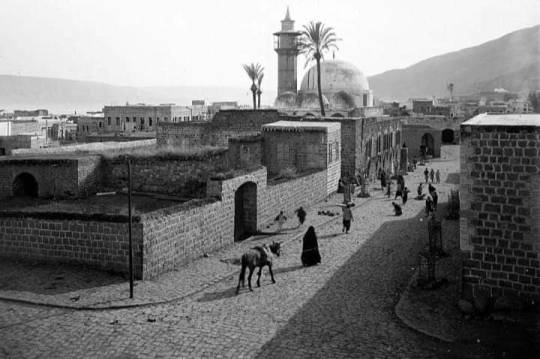
وصورة نادرة وساحرة لحي في مدينة طبريا عام 1914
#فلسطين حره 🇵🇸✌️#فلسطين تقاوم#فلسطين تنتصر#غزة العزة#غزة تحت القصف#فلسطين#القدس عاصمة فلسطين#غزة#القدس الشريف#طوفان الأقصى
8 notes
·
View notes
Text
المقاومة الإسلامية في العراق: استهدفنا بطائرات مسيرة قاعدة صهيونية شمال بحيرة طبريا
0 notes
Text

الطيران الحربي للعدو-الإسرائيلي يحلق فوق الجليل وقرب بحيرة طبريا.
إحتمال عدوان إسرائيلي جديد بإيعاز يهود روتشيلد الخزر المقنعين في سلميّة 🇮🇱 أمراء طائفة اغاخان الموسادية
يهود سلميّة 🇮🇱 في سورية بس لمسّوا على راسهم وشعروا بالخطر تبدأ العدوانات الإسرائيلية والإرهابية والموسادية
0 notes
Text
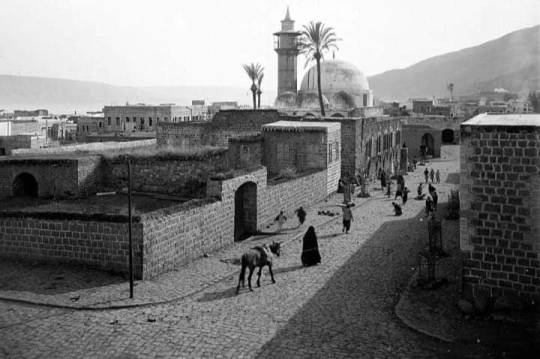
من فلسطين العربية 🇵🇸❤️
وصورة نادرة وساحرة لحي في مدينة طبريا عام 1914م
0 notes
Text
مدينة طبريا
طبريا – 1932م سوق البحر وساحة البونط وقد هدمها الاحتلال الاسرائيلي وهجر سكانها عام ١٩٤٨
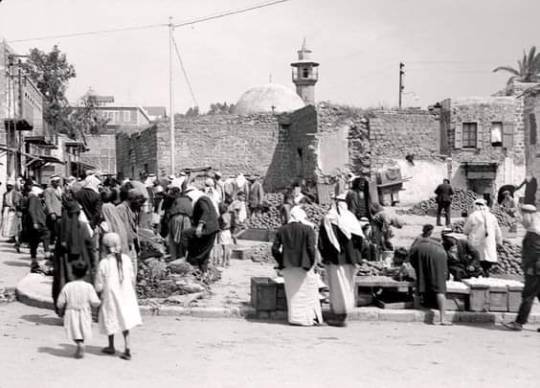
View On WordPress
0 notes
